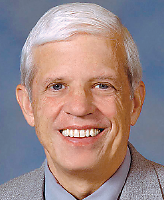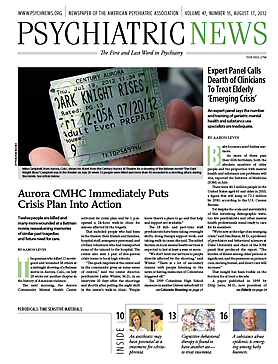A wave of baby boomers is entering later life, which will have a major impact upon the delivery of mental health and other medical services to the elderly. All one need consider are the frequent and often contentious debates about the future of Medicare and Medicaid, given the costs to maintain these programs for a doubling of the 65+ age group over the next 30 years.
What is not so apparent is that not only will the absolute numbers of disorders increase given the sheer increase in population, but also the relative importance of some disorders will increase as well. Specifically, middle aged adults in 2012 are carrying a much higher burden of substance use problems than older adults, and we have no reason to think that this burden among baby boomers will decline significantly as they enter later life. Substance use disorders, frequently an afterthought among psychiatrists treating older adults, will undoubtedly become one of the most important disorders to be addressed in the future.
No one wishes to think of her father, much less her mother, suffering from a substance use disorder. Psychiatrists are not immune to this bias and therefore are reticent to inquire about substance use in their older patients. Yet the numbers suggest that we must screen for these disorders among the elderly if we are to provide adequate care.
In our community-based studies, we found that 23 percent of men in midlife had engaged in binge drinking during the year prior to our survey, and 14 percent of men over 65 reported an episode. The frequencies were much lower for women, but the trend remains. Binge drinking can potentially lead to a host of problems among older adults given that they metabolize alcohol more slowly and are more frail physically. Falls, driving while impaired, and confusion about the use of medications critical to their health are among the concerns. Surprisingly, 4 percent of adults aged 50 to 64 reported using marijuana during the past year.
One of the major concerns emerging from national surveys is that nonprescription use of opioid pain medications approaches 2 percent in persons over age 50. This form of substance use disorder is potentially quite dangerous and has been recognized across the adult population as one of the most critical issues the medical community faces.
The first step in addressing this invisible yet emerging epidemic is proper screening and an estimate of risk given other factors. All older adults should be screened, but some subgroups are at greater risk. Being male, Native American, or Alaska native; being unmarried; and having a lower income and less education, a diagnosis of other psychiatric disorders, and a history of problems with the law and incarceration increase the risk among older adults for experiencing substance use problems.
The CAGE, long used to screen for alcohol use disorders, has been modified to include other substances. For example the key question on a perceived need to reduce use can be modified as follows: “Have you ever felt you should cut down on your drinking or drug use?”
A computerized screening system (the Drug and Alcohol Problem Assessment for Primary Care, or DAPA-PC) has been developed and tested for quickly identifying and addressing substance abuse and related problems in primary care settings, and these can be used by psychiatrists as well. DAPA-PC is a selfadministered, Internet-based screening instrument that features automatic scoring, generation of a patient profile for medical reference, and presentation of unique motivational messages and advice for the patient.
Use of a computerized-screening instrument can save clinicians’ time by allowing patients to be screened while in the waiting room, resulting in the need for the clinician to follow-up with a patient only when prompted by the results of the screening. In addition, computerized screening may lend itself more to an honest revelation regarding drug use compared with face-to-face discussions. Though older adults are less facile in using the Internet, this is fast changing, and the acceptability of computers by the elderly will only increase.
If a problem is identified and has not reached a severe level, the clinician can have a frank and honest discussion with the older patient followed by a brief intervention, such as brief motivational therapy. In more serious cases, the usual approaches to treating substance use disorders, including residential rehab programs, can be prescribed. If the clinician gets the family involved, then older adults are more willing to yield to the views of both psychiatrist and family that the problem is serious and must be addressed as soon as possible.


